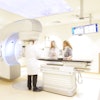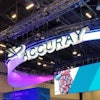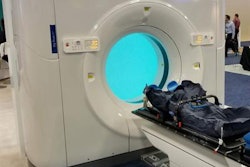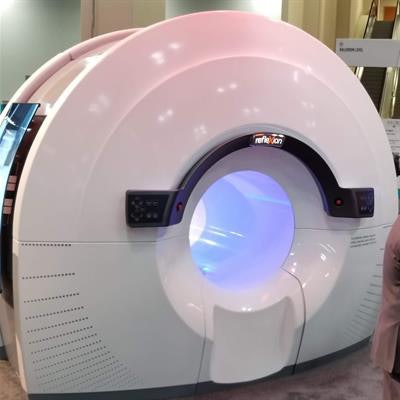
SAN ANTONIO - What if you could take cancer's natural activity in the human body and turn it back on itself? That's the premise behind RefleXion, which made its debut at this week's American Society for Radiation Oncology (ASTRO) meeting with a PET-guided radiation therapy system.
Calling its technology biology-guided radiation therapy (BgRT), RefleXion's system combines a PET/CT scanner housed with a linear accelerator in an oversized gantry. The premise is somewhat simple: As tumors give off photons from radiopharmaceutical uptake, those photons are detected by the system's PET component. The linear accelerator takes that signal and then fires back photons of its own, designed to kill cancer in precisely targeted doses.
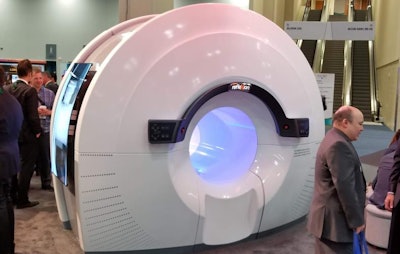 The biology-guided radiation therapy system from RefleXion.
The biology-guided radiation therapy system from RefleXion.The primary advantage of the system is that it can deliver treatment to multiple cancer sites at once, which is key in treating metastatic disease along with the primary tumor, according to Sam Mazin, PhD, RefleXion's founder and chief technology officer. The RefleXion system can treat five to 10 cancer sites in a single session, versus one to three sites for a conventional radiation therapy unit. While BgRT is best suited for metastatic disease, it can also be used for single-site cancer.
Mazin believes that PET is uniquely suited for guiding radiation therapy, as the modality detects the biological activity of cancer rather than just its structural outline. Also, thanks to PET guidance, there's no need for fiducial markers, motion management, or gating to guide treatment. The system's gantry also rotates much faster than in a conventional radiation therapy system, at 60 RPM, versus 1 to 6 RPM for a conventional linear accelerator.
The RefleXion system is fully automated in targeting sites for treatment, which raises the question of how the unit deals with nonspecific radiation uptake -- that is, radiotracer signal that appears outside of a tumor due to natural biological activity. The solution is simple: Prior to treatment sessions, users draw boxes on CT planning images that confine the system's treatment to predefined areas. The process also helps automate workflow.
Mazin conceived the BgRT technology while he was a postdoctoral fellow at Stanford University 10 years ago. He founded RefleXion in 2009, with ASTRO 2018 marking the firm's coming out party. A network of 11 sites are working with its software; when full gantries are available, it plans to install working systems at three to four locations.
RefleXion has also begun staffing up, hiring five new executives earlier this month, including a chief financial officer and several vice presidents to spearhead manufacturing and operations efforts. The Hayward, CA, firm has raised money through several investment rounds to commercialize the technology, and it counts among its investors pharmaceutical giants such as Pfizer and Johnson & Johnson.
RefleXion plans to file a 510(k) application with the U.S. Food and Drug Administration by the end of 2018, with sales beginning in late 2019.

